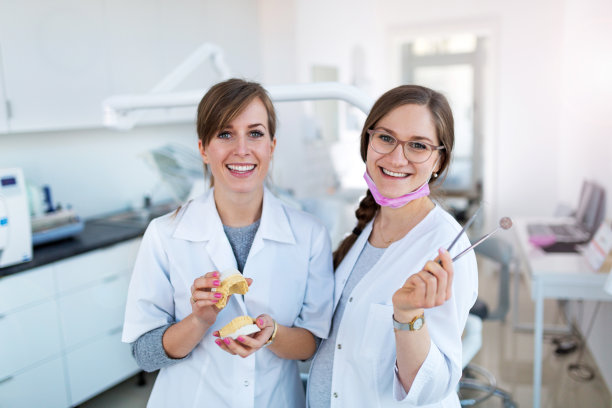The Essential Guide to Understanding the Process and Aftercare of Tooth Extraction for Optimal Recovery
Summary: This comprehensive guide focuses on the critical aspects of tooth extraction, including the preparation, the procedure, aftercare, and the expected recovery process. Understanding these elements can significantly ease the anxiety surrounding tooth extractions and promote optimal recovery. Each section addresses common concerns, offers practical tips, and emphasizes the importance of following aftercare instructions to minimize complications and ensure a smooth healing process. In particular, the article underscores the role of communication with dental professionals, the significance of managing discomfort, and maintaining good health practices post-extraction. This guide serves as a valuable resource for patients facing the challenge of tooth extraction, empowering them with the knowledge necessary for a more confident and effective recovery journey.
1. Preparation for Tooth Extraction

The preparation phase for tooth extraction is crucial for ensuring a smooth and successful procedure. Before the extraction, patients must schedule a consultation with their dental professional. This meeting allows for a thorough examination of the tooth in question, as well as any necessary imaging, like X-rays, to assess the surrounding bone structure and neighboring teeth. Being well-informed helps patients understand the procedure and what to expect.
During the consultation, patients should disclose their complete medical history, including any medications they are currently taking or any medical conditions they have. This information helps the dentist determine the best anesthetic options and whether antibiotic prophylaxis is necessary, especially for patients with certain health risks. Pre-operative instructions may include fasting guidelines or recommendations for avoiding blood thinners prior to the procedure.
Additionally, arranging post-procedure transport is an essential part of preparation. Since patients often receive sedation, they should not drive themselves home afterward. Having someone to assist during the initial recovery period can make a significant difference in comfort and ease.
2. The Tooth Extraction Procedure Explained
The extraction procedure typically begins with the administration of anesthetics to ensure the patient remains comfortable and pain-free throughout. Local anesthesia is most common, numbing the specific area around the tooth. In some cases, sedation may be used to relieve anxiety and further enhance comfort. Once adequately numbed, the dentist will assess the tooth to determine the best extraction technique.
There are two main methods of extraction: simple and surgical. A simple extraction is employed when the tooth is fully erupted and can be removed without incisions. Conversely, surgical extraction is necessary for teeth that are broken below the gum line or impacted beneath the gum tissue. The latter method might involve making incisions and possibly removing some bone. Understanding these differences helps demystify the procedure and reduces patient anxiety.
Post-extraction, the dentist will take steps to control bleeding, often packing the site with gauze and providing care instructions. Patients will receive guidance on what to expect in the immediate post-operative period, including the need for rest and the use of ice packs to reduce swelling.
3. Aftercare: Ensuring a Smooth Recovery
Aftercare is vital to achieving optimal recovery following tooth extraction. One of the primary components of aftercare is managing pain and swelling. Dentists typically recommend over-the-counter pain relief options or may prescribe medications for more severe discomfort. Utilizing ice packs during the first 24 hours can significantly minimize swelling and bruising.
Maintaining oral hygiene post-extraction is also crucial. However, care must be taken not to disrupt the blood clot that forms at the extraction site. Patients should avoid vigorous rinsing and stick to gentle brushing of teeth while steering clear of the extraction area for several days. After 24 hours, patients can start rinsing with a warm saltwater solution to promote healing.
Additionally, dietary choices play a significant role during the recovery phase. Soft foods should be prioritized, while hot, spicy, or crunchy items should be avoided. Proper nutrition will support healing and help the body recover from the stress of the extraction. Staying hydrated is equally important, but patients must be cautious about using straws, as suction can dislodge the blood clot and lead to complications.
4. Monitoring Recovery and Identifying Complications
Post-operative monitoring is essential to ensure a straightforward recovery. Patients should be aware of the common symptoms that accompany healing, such as mild soreness and slight swelling. These are normal, but significant increases in pain, persistent swelling, or fever may indicate potential complications that warrant immediate attention from a dental professional.
One of the most frequently discussed complications is dry socket, a painful condition that occurs when the blood clot at the extraction site becomes dislodged. Patients should be educated on the symptoms of dry socket, which include sharp pain radiating from the site to the ear or temple, usually starting around the third day after extraction. Recognizing these signs early can prevent more extended recovery periods.
Lastly, following up with the dentist as directed is critical to ensure proper healing. Follow-up visits allow the dentist to monitor the recovery process and address any arising issues, further supporting a successful outcome.
Summary: Understanding the process surrounding tooth extraction is vital for patients aiming for optimal recovery. From preparation through aftercare and monitoring recovery, each stage plays a crucial role in minimizing discomfort and complications. Patients are encouraged to engage with dental professionals regarding any concerns and adhere to recommendations for a smooth recovery.
This article is compiled by Vickong Dental and the content is for reference only.



